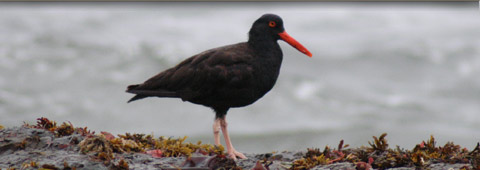A pilot could be fined up to $100,000 – so read this!
Feb 26 2012 · 0 comments · NewsBy Jim Moore
AOPA and EAA have joined forces seeking to at least delay implementation of a new rule that could bring six-figure fines to pilots who traverse airspace that federal officials have yet to depict in graphic form.
Both organizations remain committed to protecting wildlife and educating pilots about noise-sensitive areas. Absence of clear graphic depictions of the newly regulated areas has made that task impossible.
In a joint Feb. 21 letter to the FAA and the National Oceanic and Atmospheric Administration, the organizations noted NOAA’s refusal to provide a map of affected wildlife sanctuary boundaries in the Pacific Northwest. Slated to take effect Feb. 27, the new regulation would enable NOAA to impose fines of up to $100,000 for flying at low altitude (1,000 to 2,000 feet msl) over sanctuaries in the Channel Islands, Monterey Bay, and Gulf of the Farallones National Marine sanctuaries in California; and the Olympic Coast National Marine Sanctuary in the state of Washington. The boundaries of the new protected areas—effectively regulated airspace though both agencies deny that is the case—differ from the boundaries depicted on current charts.
In response to a request for a graphic depiction of the new protected areas, NOAA on Feb. 7 stated that the agencies are still working to develop the charts.
“We are working with the FAA and are in the process of determining the best way to depict these zones on their charts, and expect that the FAA will update them according to their regular schedule,” NOAA wrote.
NOAA also promised future “press releases” to educate the pilot community. In the Feb. 21 letter, AOPA Vice President of Air Traffic Services and Modernization Heidi Williams and EAA Vice President of Advocacy and Safety Sean Elliott protested NOAA’s refusal to clarify boundaries and facilitate pilot education efforts.
“Pilots simply cannot be expected to avoid marine sanctuaries if NOAA is unwilling to share the boundaries of the sanctuaries in their rule that do not align with currently charted boundaries,” Williams and Elliott wrote. “A federal register notice and press release does not constitute proper education or adequate outreach—especially when neither includes a graphic depiction.”
AOPA and EAA continue to oppose the regulation for other reasons; including the dangerous precedent it sets of ceding authority over airspace to agencies other than the FAA.
AOPA and EAA remain committed to helping NOAA educate pilots to “fly friendly” over sensitive areas, provided that safety of flight remains the top priority. The organizations also opposed the final rule’s provision that pilots who stray into the ill-defined airspaces are presumed to have disturbed wildlife, a presumption that, in practice, is impossible to disprove.
The Feb. 21 letter urges both agencies to work collaboratively with the aviation community, delay implementation of the final rule, and for NOAA to pledge—in writing—that no enforcement action will be taken until proper education and mitigation of remaining concerns are addressed.








